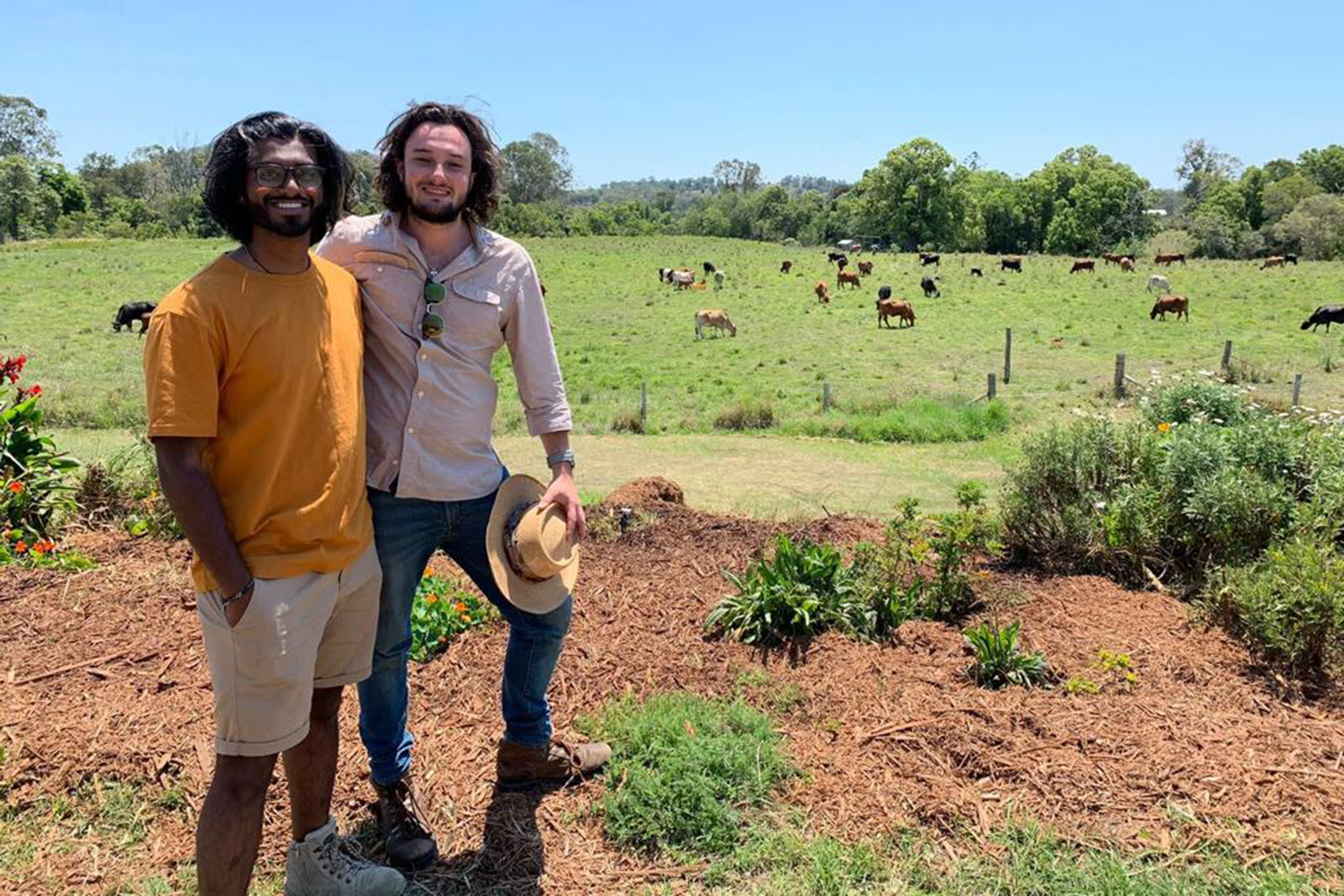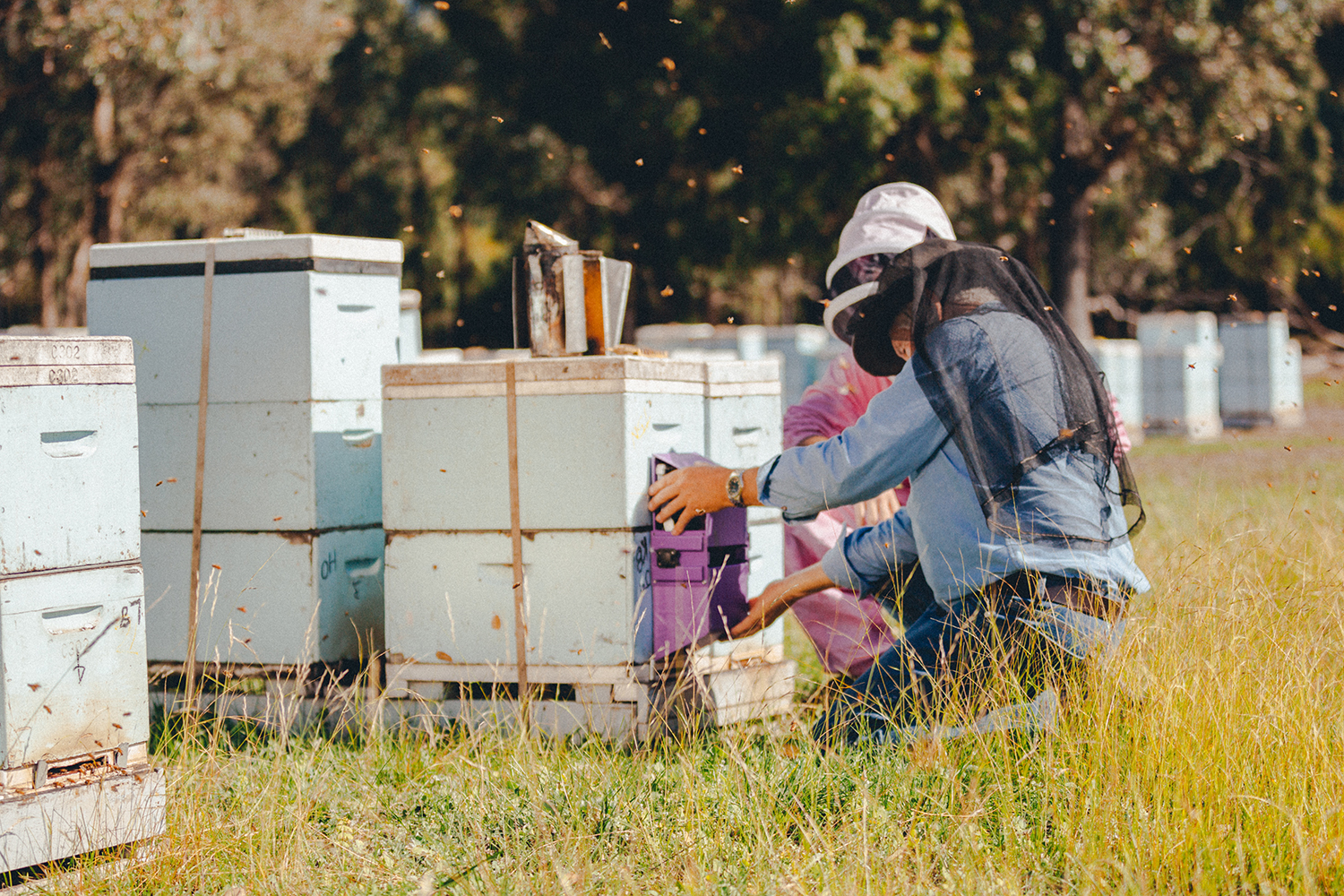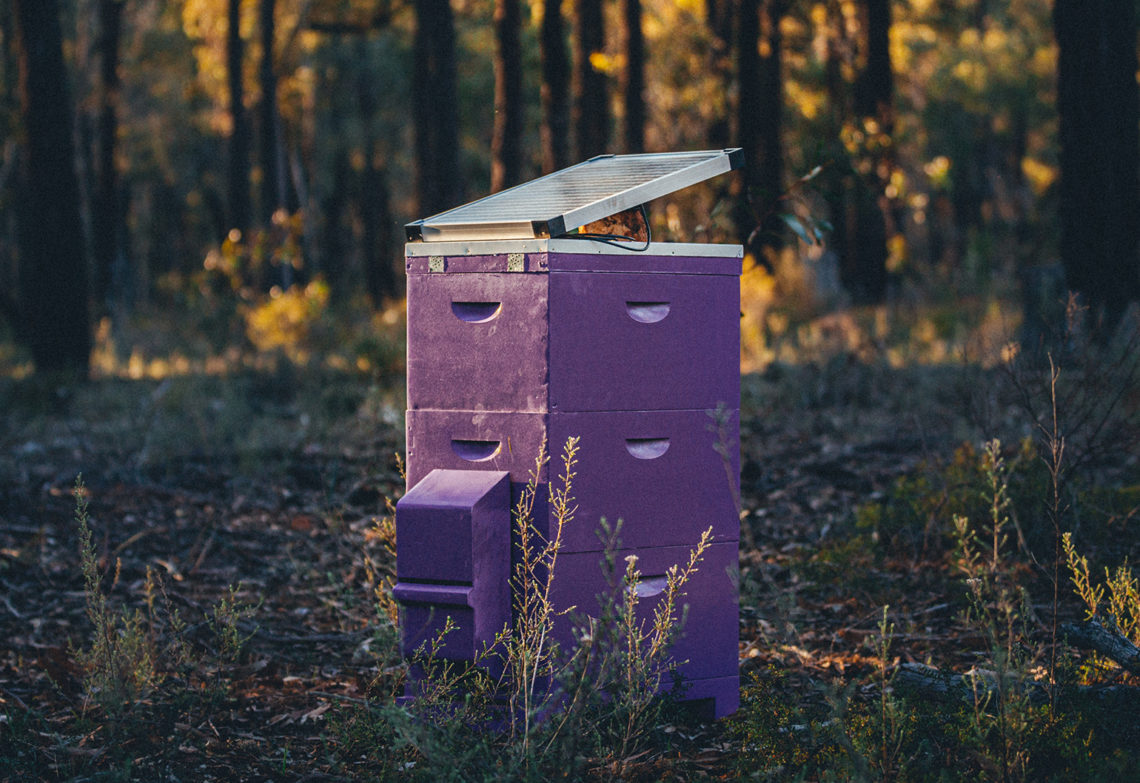Engineers have designed a high-tech device that will protect our food supplies from a significant biosecurity threat.
It’s estimated that one in every three bites of food eaten by Australians relies on pollination by bees. With the devastating Varroa destructor mite feared to be on its way to Australian shores, two aerospace engineers designed an AI-driven solution to help protect bees.
The Purple Hive Project is a world-first innovation for the honey industry. Using 360-degree camera technology and artificial intelligence (AI), it detects whether a bee is healthy or carrying the Varroa mite.
The innovation was driven by Bega Cheese, which recently branched out into making all-Australian honey, and brought to life by a collection of Australian technology and engineering minds: Vimana Tech, which handled the engineering and software architecture; Xalient, which took care of the AI and computer vision; and Melbourne-based Honest Fox, which managed the cloud connectivity and technical architecture.
Former Monash engineering student and co-founder of Vimana Tech Joel Kuperholz said that the device, which looks like a letterbox, is attached to the front of a beehive. It’s also painted purple, as the colour is attractive to bees and gentle on their sense of sight.

“Cameras both top and bottom capture 360-degree views of the bees as they enter and exit over small glass slides,” he told create.
“From here, the captured image is run through Xalient’s custom-built artificial intelligence, which identifies each bee and then processes this image in search of the Varroa. If a Varroa mite is spotted, [the device uses] 4G wireless communications to send an alert to the relevant authorities.”
Hive mind
The system was designed by Kuperholz and his business partner Vignesh Murugan. The two met as part of Monash University’s student team that competed in the University Rover Challenge in Utah in 2018. Both drew on this experience of designing devices for remote locations to make the Purple Hive powered entirely by a solar panel with a 12 V battery backup for easy diagnostics as well as remote monitoring.
“It was designed completely ‘around the bee’, from the colour purple, which the bees are attracted to, to the honeycomb shape they naturally make,” Kuperholz added.
“The entrance slot doesn’t slow the bees down either, allowing them to travel in and out of the hive without interruption.”

After developing the Purple Hive prototype, Kuperholz and Murugan passed it onto the Australian office of Silicon Valley tech firm Xalient, which trained computer vision AI on labeled data collected from the initial hive trials.
“Each camera image is scanned by the AI to look for Varroa mites on each bee that is in view. All this happens on the device inside the hive. The detection is not done in the cloud, which makes the system more resilient and far cheaper,” said Xalient CEO Lars Oleson.
The firm continues to monitor the effectiveness of its technology by sampling images from the hive that the AI has processed to check its accuracy — both by humans and supervisor AI.
“We keep fine-tuning the algorithm by correcting any mistakes and testing out adjustments and updates. This means that the Purple Hive’s accuracy and effectiveness improves over time as it learns, and the mesh of more Purple Hives will contribute to that learning. More hives leads to smarter AI – it’s a virtuous cycle,” Oleson said.
He added that it’s not the only virtuous cycle at play when it comes to protecting the honey bee.
“There is some poetry here, as some of the inspiration of Xalient’s bio-inspired vision comes from bees.”




Are you able to elaborate on which authorities are contacted?